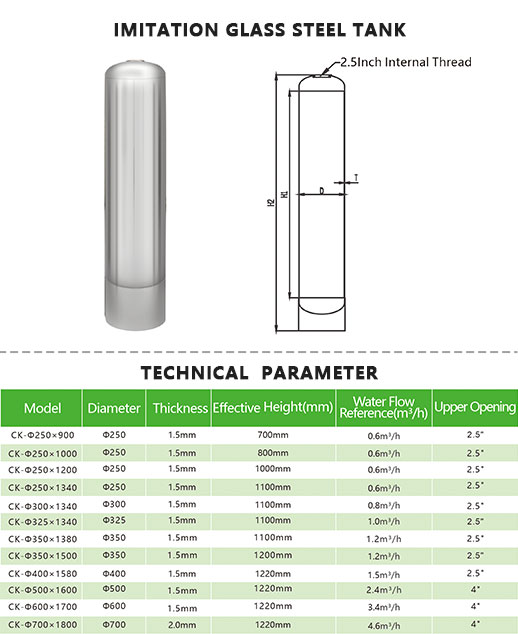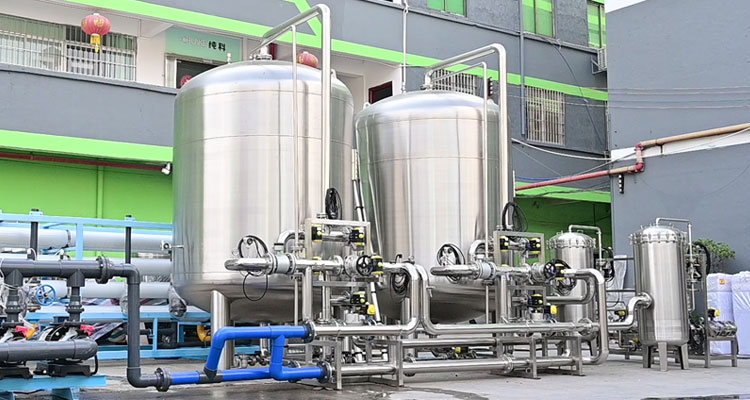Why is the water level rising in my water softener?
As an important part of the home water treatment system, the water softener is used to remove hardness ions from the water, reduce scale formation, and extend the service life of home appliances. However, in daily use, many people may encounter a sudden rise in the water level in the water softener, which makes them confused and worried.
So, why does the water level in the water softener rise? What should the water level in the water softener be maintained at? This article will explore these issues in depth to help users understand and solve this common problem.

What is the basic working principle of the water softener?
Before understanding the reasons for the rise in the water level of the water softener, it is necessary to understand the basic working principle of the water softener. The water softener mainly removes hardness ions such as calcium and magnesium from the water through a process called ion exchange. Its core component is a tank filled with resin. When hard water flows through the resin layer, the hardness ions in the water are exchanged with the sodium ions on the resin to form softened water.
A water softener usually consists of the following main parts:
1. Resin tank: The tank containing the resin particles, which is responsible for ion exchange.
2. Salt tank: The tank containing salt, which is used to prepare the regeneration solution (usually brine).
3. Control valve: Manages the direction of water flow, the regeneration process, etc.
4. Brine valve: Controls the process of brine entering the resin tank.
The operation cycle of a water softener is divided into two main stages: the working stage and the regeneration stage. In the working stage, hard water is softened by passing through the resin tank, and the softened water is used by the user. In the regeneration stage, the resin is saturated, and the water softener automatically or manually starts the regeneration process, flushing the resin tank with brine, flushing away the hardness ions, and reattaching the sodium ions to make the resin have the softening function again.

Why is the water level in my water softener rising?
During the use of the water softener, users may notice that the water level in the salt tank is higher than usual. This phenomenon may be caused by the following reasons:
Brine valve failure
The brine valve is a key component that controls the entry of brine into the resin tank. If the brine valve fails, such as the valve not closing completely or not sealing tightly, brine may continue to flow into the salt tank, causing the water level to rise. Wear or aging of the brine valve seal are common causes of failure.
Leaking inlet or outlet valve
The inlet and outlet valves of the water softener control the entry of hard water and the exit of soft water, respectively. If these valves are leaking, especially during the regeneration phase, water may continue to enter the salt tank, causing the water level to rise. This may be caused by aging of the valve seal or damage to the valve itself.
Faulty float valve
The float valve in the salt tank is similar to the float valve in the toilet, which controls the height of the water level. When the water level reaches the set height, the float rises, closing the water inlet and preventing further water from entering. However, if the float valve fails, such as getting stuck or failing, the water level may continue to rise until it overflows.
Blocked drain pipe
During the regeneration process, the water softener discharges waste water containing hardness ions through the drain pipe. If the drain pipe is partially blocked, the water flow is not smooth, resulting in water not being discharged in time, which may cause the water level in the salt tank to rise. Drain blockage is usually caused by sediment or mineral accumulation.
Salt bridge phenomenon
In the salt tank, if the salt is in a humid environment for a long time, a salt bridge may form, that is, the salt clumps hang in the salt tank instead of sinking into the water. Due to the formation of a cavity under the salt bridge, the water level appears normal, but in fact the water is not fully in contact with the salt, causing the water that is not consumed during the regeneration process to flow back into the salt tank and the water level to rise.
Incorrect regeneration settings
The regeneration settings of the water softener include the regeneration cycle and the amount of brine replenished. If these settings are incorrect, such as the regeneration cycle is too short or the amount of brine replenished is too much, it may cause excessive brine to flow into the salt tank during regeneration, causing the water level to rise. This situation usually occurs in newly installed water softeners or water softeners that have just replaced the control valve.

What should the water level in the water softener be?
The water level in the water softener is not fixed. It depends on the model, capacity and working principle of the water softener. However, in general, the water level in the water softener should be kept in a relatively stable range to ensure its normal operation and regeneration effect.
For most household water softeners, the water level in the salt tank should generally be maintained at about 1/3 to 1/2 of the bottom of the salt tank. This level is sufficient to dissolve enough salt to produce enough brine for regeneration without causing the water level to be too high.
During the regeneration process, the water level in the salt tank may rise temporarily. This is because the water softener needs to introduce enough water into the salt tank to dissolve the salt and form a regeneration solution. After the regeneration is completed, the water level should return to the normal range. If the water level is significantly higher than the normal range after regeneration, the above problems may exist and inspection and maintenance are required.
What are the effects of too high water level in the water softener?
If the water level in the water softener is continuously too high, the following problems may occur:
● Excessive dissolution of salt: Too high a water level will cause too much salt to be dissolved, producing excessive brine. This not only wastes salt, but may also affect the regeneration effect and reduce the efficiency of the water softener.
● Poor regeneration effect: Too high a water level may cause the brine to not flow evenly through the resin tank, affecting the regeneration effect and ultimately causing poor water quality.
● Equipment damage: Continuously high water levels may cause additional pressure on components in the salt tank, such as the float valve, brine valve, etc., increasing the risk of failure.

How to solve the problem of rising water levels in water softeners?
If you suspect that there is a problem with the brine valve, you should first check the status of the brine valve to ensure that it can be opened and closed normally. If the seal is found to be aging or the valve is damaged, the relevant parts should be replaced in time.
Secondly, check whether the inlet and outlet valves are leaking, especially during the regeneration process. If leaks are found, the valve seal and the valve itself should be checked and replaced if necessary. Check the status of the float valve regularly to ensure that it can rise and fall normally and close the water inlet. If the float valve is stuck or fails, it should be cleaned or replaced.
In addition, if you suspect that the drain pipe is blocked, you can use a cleaning tool to dredge it to ensure smooth drainage. If the blockage is serious, you may need to replace the drain pipe. To prevent the formation of salt bridges, you can regularly check the salt condition in the salt tank and stir or add new salt in time. If a salt bridge has formed, you can rinse it with hot water or break it manually.
Finally, if you suspect that the regeneration setting is incorrect, you should check the settings of the water softener to ensure that the regeneration cycle and brine replenishment amount meet your usage requirements. If you are not sure how to set it, you can refer to the user manual of the water softener or consult a professional.




